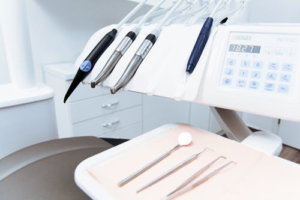Blog
Do I Need My Wisdom Teeth Out?

Not everyone develops wisdom teeth, with 35% of the population not getting them through. Despite this, they may still be present in the bone! If they do appear, they can cause issues, such as severe pain within the mouth, which often leads to dentists recommending having them removed.
Wisdom teeth are the last set of adult teeth to appear on the jawline, with them usually happening between the ages of seventeen and twenty-five. Not everyone who gets wisdom teeth develop all four, but around 85% of wisdom teeth will eventually need to be removed for one of these reasons:
- Damage to other teeth – extra teeth can cause existing teeth to misalign causing bite issues,
- Jaw damage – cysts can form, damaging the jaw bone and nerves,
- Sinus issues – lead to sinus pain, pressure and congestion,
- Inflamed gums – tissue can swell and prove difficult to clean,
- Cavities – swollen gums can create pockets by the teeth helping bacteria to grow,
- Alignment – impacted wisdom teeth can lead to overcrowding and additional treatment,
- The tooth is impacted – molar is prevented from entering the mouth due to a physical barrier, like other teeth or it is angled abnormally.
The Procedure
Depending on the condition of the wisdom teeth and the complexity of the tooth extraction will depend on whether the dentist can remove the teeth themselves or whether they refer the patient to a specialist.
If the dentist performs the procedure themselves the following process will happen:
- Numbing gel with be rubbed into the gums around the tooth, before a local anaesthetic injection is administered.
- The dentist will apply pressure onto the tooth to widen the tooth socket. This is done by rocking the tooth back and forth.
- In some cases, a small cut will need to be applied to the gum tissue, along with the tooth being cut into smaller pieces before removal. If a cut has been made then, depending on the depth, stitches will be required.
- Removal of the wisdom tooth.
- Gauze is placed over the area to control bleeding and help the blood clotting process to begin.
Once the wisdom tooth has been removed, swelling and discomfort may be experienced in and around the area, lasting for up to two weeks. Whilst the area heals the patient will need to follow their dentists’ instructions on aftercare to prevent the blood clot from dislodging from the socket, ensuring that the area does not become infected.
Here at Shifnal Dental Care, we believe that prevention is the best treatment. If you are experiencing any pain or discomfort in your mouth it is important to get it checked.
If you are unsure whether you need your wisdom teeth out and would like to ask for advice or would like to book an appointment, please contact us on 01952 460119 or fill out our enquiry form.
Share this post:
